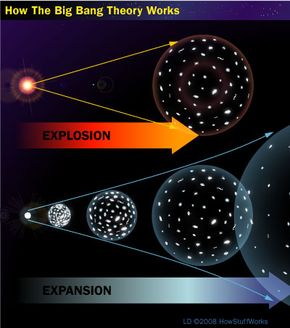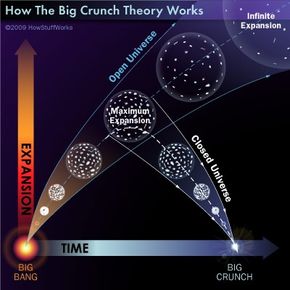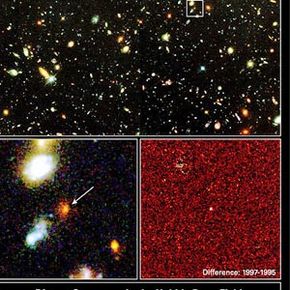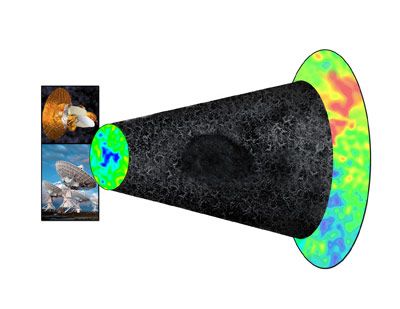We're all worried about what will happen at the end of our lives. We see other living things die, and we know it will happen to us. Because it's inevitable, we worry about when, where and how it will happen. Many of us also wonder about the fate of Earth. Will it be a hospitable blue ball forever, or will it eventually be consumed by the sun as it swells from a medium-sized yellow star to a red giant? Or perhaps we'll poison our planet, and it will float, cold and desolate, through space. If such a thing were to happen, how long would it take? A hundred years? A thousand? A million?
Some astronomers — those who call themselves cosmologists — ask similar questions about the universe. The scale that these scientists work at, of course, is much different. The universe is huge compared to a single planet, even a single galaxy, and its timeline is much, much longer. Because of this, cosmologists can't know with certainty how the universe began or how it will end. They can, however, collect evidence, make educated guesses and establish theories.
Advertisement
One such theory, concerning the future of the universe, is playfully known as the "big crunch." According to this theory, the universe will one day stop expanding. Then, as gravity pulls on the matter, the universe will begin to contract, falling inward until it has collapsed back into a super-hot, super-dense singularity. If the theory holds true, the universe is like a giant soufflé. It starts out small, then expands as it heats up. Eventually, however, the soufflé cools and begins to collapse.
Nobody likes a fallen soufflé, and we shouldn't like a universe that behaves like one. It spells the doom of every galaxy, star and planet that currently exists. Luckily, the big crunch is not a guarantee. Cosmologists are currently engaged in a hot debate. One camp says the soufflé will fall; the other camp says the soufflé will expand forever. It will be billions of years before we know for sure which camp is right.
In the meantime, let's dive deeper into the big crunch to understand what it is and what it means for the universe. Because the big crunch is actually a consequence of the big bang, let's start there.
Advertisement





